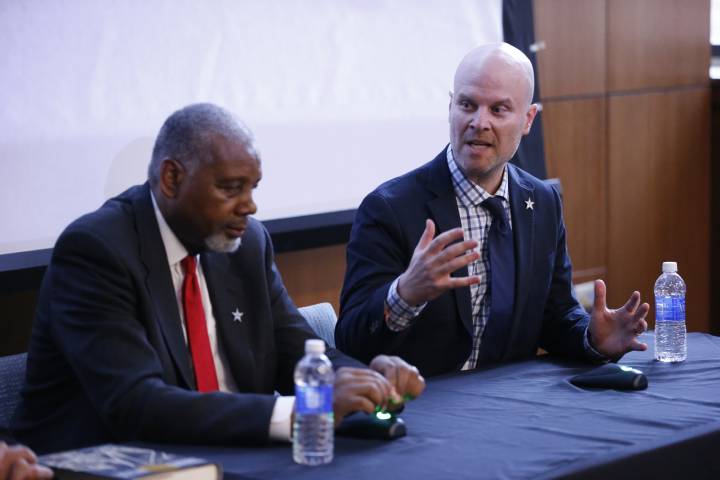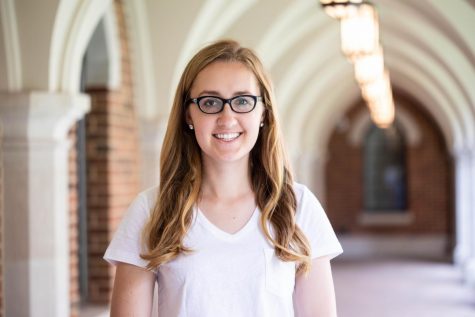One international student chose to attend Vanderbilt after reading “Strong Inside,” the story of Perry Wallace, a Vanderbilt alum and the first African American basketball player in the SEC.
At a welcome reception for international students several weeks ago, author Andrew Maraniss spoke with a young man from China who read “Strong Inside” and decided to attend Vanderbilt because he felt that if Perry Wallace could succeed at Vanderbilt, he could too.
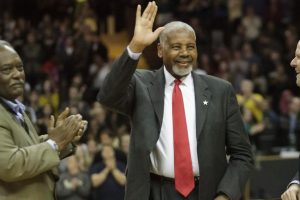
“To see the reach of the book all the way across the world was really cool,” Maraniss said.
Maraniss’ interest in the story of Perry Wallace began with a paper he wrote for a black history class as an undergraduate student at Vanderbilt. Maraniss thought sports wouldn’t be a serious enough topic to write about in college, and he was surprised when his professor approved the idea. After writing this paper about Wallace’s experience as the first African American basketball player in the SEC, Maraniss was still curious about Wallace’s story.
“I thought it was the most interesting story that I had ever heard that had never really been told to a large audience,” Maraniss said. “And so I felt this sense of responsibility in a good way. If I know this story, and this story needs to be told, and no one else is telling it, then I’d better do it, you know?”
About two decades later, Maraniss’ interest in Wallace’s story led to eight years of research and writing and eventually the final product: “Strong Inside,” a complete biography of Perry Wallace and this year’s Commons Reading.
On Tuesday Sept. 27, Maraniss will speak about the book at the annual Lawson Lecture, joined by Wallace and his former teammate Godfrey Dillard.
An early start
Sports and writing have long been Andrew Maraniss’ passions–as a five year old, he was writing his own sports magazine with previews of each MLB team and their prospects for the 1976 season. At 13, Maraniss wrote columns about his hometown team, the Packers, and compiled them into his “AJ’s Sports Journal.”
Growing up with a father who wrote for the Washington Post and a grandfather who was a newspaper editor, Maraniss was surrounded by writing. However, his love for writing was born independently of his family, and he says that it was always something he wanted to do as a career. When he was 13, Maraniss had the opportunity to interview John Feinstein, a bestselling sports author, which further solidified his interest in sports journalism.
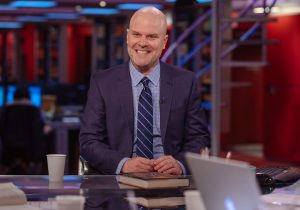
Maraniss was the sports editor of his high school newspaper in Austin, Texas, and it was there that he learned about the Fred Russell-Grantland Rice Scholarship, a scholarship to Vanderbilt University for students in sports journalism. He applied for the scholarship despite never having heard of Vanderbilt, and when he found out that he received the scholarship, he decided to attend Vanderbilt.
“My whole connection to Nashville, and to Vanderbilt, is thanks to writing, and sportswriting in particular,” Maraniss said.
Undergraduate at Vanderbilt
As a freshman at Vanderbilt, Maraniss joined the Hustler staff during his first week on campus. He enjoyed traveling around the SEC to cover games for the sports section, including a University of Georgia football game that first fall.
Maraniss loved to humanize sports by writing feature stories on people he saw at games. He wrote about “The Irate Fan,” a regular at the men’s basketball games known for jumping out of his seat, yelling at the referees and calling for technical fouls on opposing coaches. During the interview, Maraniss discovered that the man was a dentist and had once broken his middle finger while making the gesture for calling a timeout.
Several of Maraniss’ articles in the Hustler advocated for the new student recreation center to be named after Wallace. Although Vanderbilt Student Government passed a resolution calling for this as well, the name change never occurred. To this day, the Vanderbilt Recreation and Wellness Center still lacks an official title.
“I wouldn’t mind it if students kind of took up that cause again and pushed for it,” Maraniss said.
Maraniss’ early career in sports writing
After graduating from Vanderbilt, Maraniss stayed in Nashville and worked for the Vanderbilt Athletics Department in sports information. He worked with the media and publicized the baseball, football and men’s and women’s basketball teams. A year in, Maraniss became the head publicist for the men’s basketball team.
After 5 years at that position, Maraniss fulfilled his childhood dream of working in the MLB when he accepted a job as the media relations manager for the Tampa Bay Rays. He loved the job, but also realized it was a career he didn’t want to do for the rest of his life.
“I got to travel around the country and go to 100-and-something baseball games, but I could see that my boss never got to see his family,” Maraniss said.
After a year with the Rays, Maraniss decided to move back to Nashville, where he accepted a position at McNeely Pigott & Fox Public Relations. He worked there for 18 years, and as a partner for the last four. Maraniss balanced research and writing for “Strong Inside” with his public relations career for eight years before leaving his position in February to make writing his career.
“I realized that if I wanted to continue to do what I loved, which is writing, I had to make a choice,” Maraniss said. “I’m devoting myself full time to writing, which I’m really enjoying.”
The “Strong Inside” journey
Maraniss took eight years to write “Strong Inside,” the biography of Perry Wallace’s life and his experience as the first African American basketball players in the SEC. He describes it as a long but rewarding process.
“I don’t think I understood initially how much time it would take, how much serious research there needed to be before I even wrote the first word,” Maraniss said.
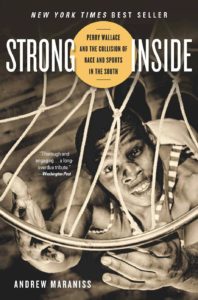
“Strong Inside” describes Perry Wallace’s young life as a dedicated student and exceptional basketball player in 1960’s Nashville. As an African American student and basketball player at Vanderbilt, Wallace experienced hostility on and off the court. Vanderbilt had just begun admitting African American students, and Wallace had the task of desegregating SEC basketball.
As part of the university’s efforts to encourage diversity and inclusion, the book was chosen as the Ingram Commons Reading for the Class of 2020, which Maraniss said is the professional highlight of his career.
“I think it says so much for the integrity and strength and character of Vanderbilt, that it would choose a book for freshmen that is at times a difficult story for the university,” Maraniss said. “I think that’s amazing.”
The university has created several programs for first-year students related to the book. Visions groups took a QR code tour on campus of locations relevant to Wallace’s story, and the English Language Center created a special supplement to help students from other countries make the most of reading the book. The exhibit Race, Sports, and Vanderbilt: 1966-1970 opened at the Cohen Memorial Hall fine art gallery on Sept. 23. The exhibit provides a look into the history of sports and racial integration of SEC teams in the time period.
Since publishing the book, Maraniss has had unique opportunities to interact with the Vanderbilt and greater Nashville communities. Wallace and Maraniss spoke at the Nashville public library following the release of the book, and Maraniss recalls many of Wallace’s former classmates coming up to have their books signed with tears in their eyes. Many of them confessed to not having known what Wallace had gone through until reading the book.
“They were coming up to him, saying please forgive me, I wish I had been there for you, or I wish I had been paying attention or had understood what you were dealing with,” Maraniss said. “To see that reaction to the book was really meaningful to me.”
This past spring, Wallace was honored at a Vanderbilt men’s basketball game in front of a crowd of 15,000 fans. Later, as Maraniss and Wallace were walking out, a custodian stopped them to shake Wallace’s hand and to tell him how much he admired him and how much the story meant to him.
“After that, Perry turned to me and said, ‘That shows how deep this whole story of the book is really reaching, that you had this halftime celebration in front of 15,000 people, and then you also had the custodian late at night who knew about the book and who knew about the story,’” Maraniss said.
“Strong Inside” will be accessible to an even wider audience with a middle school version for kids ages 10 to 14 available this January. Additionally, a documentary based on the book will come out this spring.
Maraniss hopes that students will recognize the many aspects that make “Strong Inside” a book that is about much more than basketball.
“I do hope that people who might see the cover and think it’s just about basketball, and maybe for that reason wouldn’t even crack it open, will give it a shot,” Maraniss said. “Because I think they will come to find that it’s about much more than just basketball, for one, that it’ll give them a much deeper understanding of their university, and of the city that they’re now living in, and an appreciation for an incredible man, Perry Wallace.”
The tenth Annual Lawson Lecture will take place Sept. 27 at 7 p.m. in Langford Auditorium and is open to all first-year Vanderbilt students. Others who wish to view the event may do so in the Student Life Center Board of Trust Room.
Follow Maraniss on Twitter @trublu24 and on Instagram @amaraniss.

